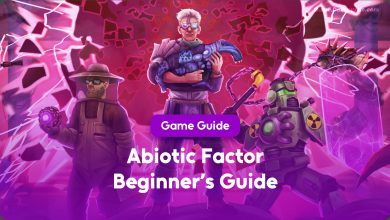Hey there, new Spire slayer! If you’ve just picked up Slay the Spire and you’re staring at the screen wondering how to climb this crazy tower of cards and monsters, you’re in the right place. This game is a deck-building roguelite masterpiece that blends strategy, luck, and a whole lot of fun. It’s got a steep learning curve, but once you get the hang of it, you’ll be hooked. In this beginner’s guide, we’re diving deep into everything you need to know to start your journey, from picking your character to battling bosses. Let’s get you ready to conquer the Spire!
What Is Slay the Spire?
Slay the Spire is a deck-building roguelite where you climb a tower (the Spire) filled with enemies, treasures, and mysterious events. Each run starts fresh—you build your deck from scratch, collect powerful relics, and make tough choices to survive. Think of it like a strategic card game mixed with the randomness of Binding of Isaac or Enter the Gungeon. Every decision matters, and no two runs are ever the same. Your goal? Reach the top and defeat the final boss (or bosses, as you’ll discover later). It’s challenging, rewarding, and oh-so-addictive.
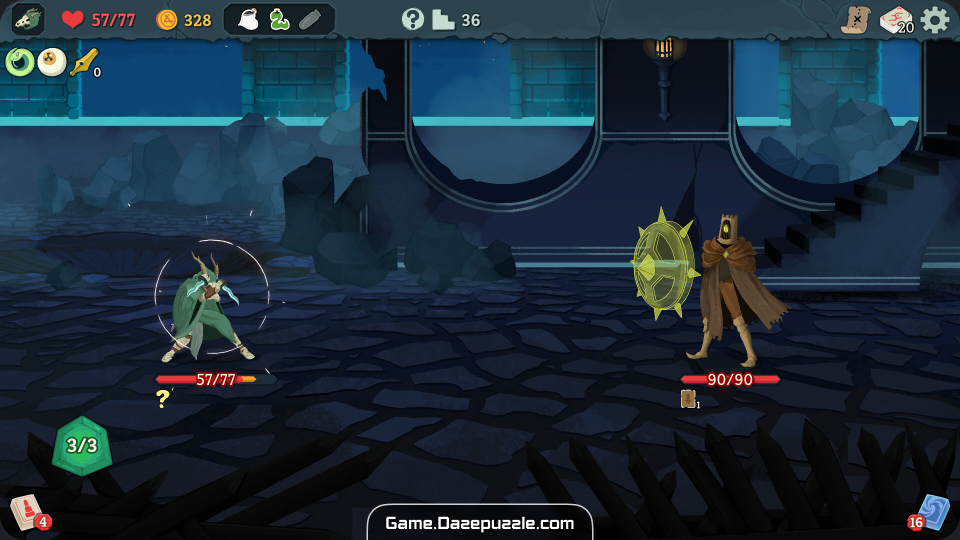
Getting Started: The Basics
When you boot up Slay the Spire, you’ll see a few options on the main menu: Standard, Daily Climb, and Custom. As a beginner, stick with Standard mode—it’s the core experience and perfect for learning the ropes. Daily Climb and Custom modes add modifiers for extra challenge, but they’re locked until you get a bit more experience.
Choosing Your Character
You start with one character unlocked: the Ironclad. Three others—the Silent, Defect, and Watcher—unlock as you progress. Each character has a unique playstyle, deck, and relic, so they feel completely different. Let’s break them down:
The Ironclad: The Tough Brawler
The Ironclad is your starting character, and he’s a great pick for beginners. He’s a soldier who sold his soul for demonic power, starting with 80 HP and a relic called Burning Blood, which heals 6 HP after every combat. His playstyle is all about dealing big damage and soaking up hits. His starting deck includes Strikes (basic attacks), Defends (basic blocks), and Bash (a card that deals damage and applies Vulnerable, making enemies take 50% more damage from attacks).
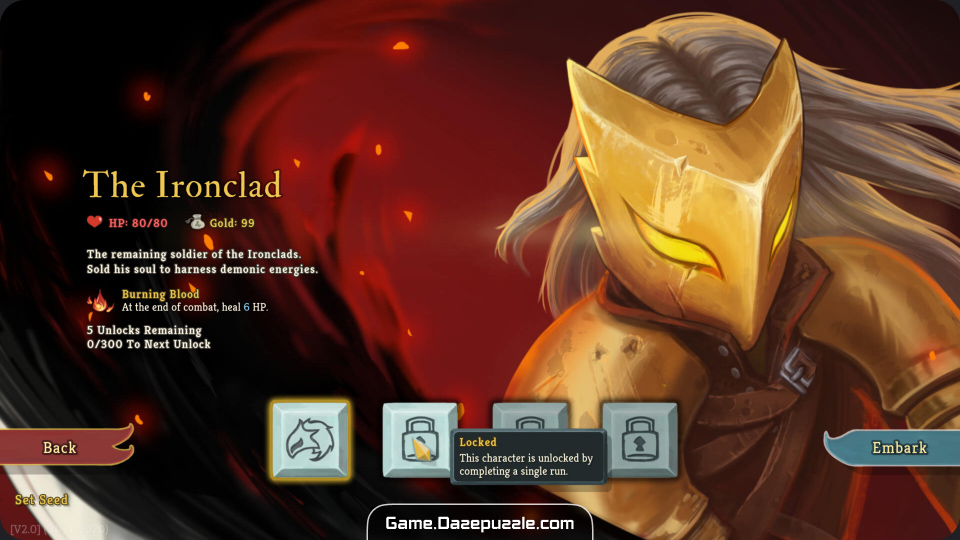
The Ironclad is forgiving because of his healing, so you can experiment without worrying too much about dying early. His cards often focus on strength scaling, self-damage for big payoffs, or exhausting cards for powerful effects. He’s perfect if you like smashing enemies head-on.
The Silent: The Sneaky Rogue
The Silent unlocks after a bit of playtime. She’s a poison-wielding assassin with 70 HP and the Ring of the Snake relic, which lets her draw two extra cards at the start of combat. Her playstyle is more tactical, relying on poison, shivs (zero-cost attack cards), and card manipulation. Her starting deck includes Neutralize (applies Weak to reduce enemy damage) and Survivor (grants block and discards a card).
The Silent excels at controlling fights with status effects and quick, cheap cards. She’s great for players who enjoy outsmarting enemies rather than overpowering them. Her lower HP means you’ll need to play defensively, but her flexibility makes her a blast.
The Defect: The Orb Master
The Defect is a robotic character with 75 HP and the Cracked Core relic, which channels a Lightning Orb at the start of combat. Orbs are unique to the Defect—they float above your head and trigger passive effects like dealing damage or granting block. His starting deck includes Zap (channels a Lightning Orb) and Dual Cast (evokes an orb twice for big damage).
The Defect is trickier to learn because orbs require planning. You’ll juggle Lightning, Frost (block), and Dark (stacking damage) orbs while managing your energy. He’s ideal for players who love complex strategies and long-term setups.
The Watcher: The Stance Dancer
The Watcher, added in 2020, is the newest character with 72 HP and the Pure Water relic, which adds a zero-cost Miracle card (grants energy) to your hand each combat. Her playstyle revolves around switching between stances: Wrath (deal and take double damage) and Calm (gain extra energy when exiting). Her starting deck includes Eruption (enters Wrath) and Vigilance (enters Calm).
The Watcher is the hardest to master due to her low HP and stance-switching complexity. She’s rewarding for players who enjoy high-risk, high-reward strategies and precise card play.
Understanding the Spire: The Map and Progression
Once you pick a character, you’ll meet Neow, a whale-like creature who offers you a starting bonus (like extra HP or a relic). Then, you’re dropped into the Spire’s map. The map is a web of nodes connected by paths, starting at the bottom and leading to a boss at the top. Each node represents an encounter, and your choices shape your run. Here’s what you’ll find:
Map Nodes Explained
The map can feel overwhelming at first, but it’s your roadmap to victory. You’ll choose a path from the bottom, moving upward through various nodes. Each node type offers different opportunities or challenges:
Basic Enemies: These are standard fights against one to three enemies. They’re manageable early on and reward gold, a card choice, and sometimes a potion. Use these to build your deck early.
Elites: Tougher enemies that hit harder but drop a relic and better rewards. They’re risky but worth it for the relic boost. Save them for when your deck feels strong.
Shops: Spend your gold here to buy cards, relics, or potions, or remove a card from your deck to make it leaner. Shops are great for filling gaps in your strategy.
Rest Sites: Campfires let you either heal (restore HP) or smith (upgrade a card). Choosing between healing and upgrading is a key decision—more on that later.
Treasure Chests: These guarantee a relic. You can skip the relic in rare cases, but as a beginner, grab them all to experiment.
Question Marks: These are random events, like finding a relic, losing HP for a reward, or facing a unique challenge. They’re unpredictable but often rewarding.
Bosses: Each floor (Act 1, Act 2, Act 3) ends with a boss fight. Bosses are tough and have unique mechanics, so you’ll need a solid deck to survive.
You might also like this: Top 10 Video Game Bosses of All Time
Planning Your Path
Pathing is a big part of Slay the Spire. Look at the map before choosing your route. Want to hit a shop to spend gold? Need a rest site to heal? Early in Act 1, prioritize basic enemies and question marks to build your deck and snag relics. Later, you might aim for elites if your deck can handle them. Always ensure you hit at least one treasure chest per floor for the relic. Planning around the boss is crucial—knowing which boss you’ll face helps you tailor your deck.
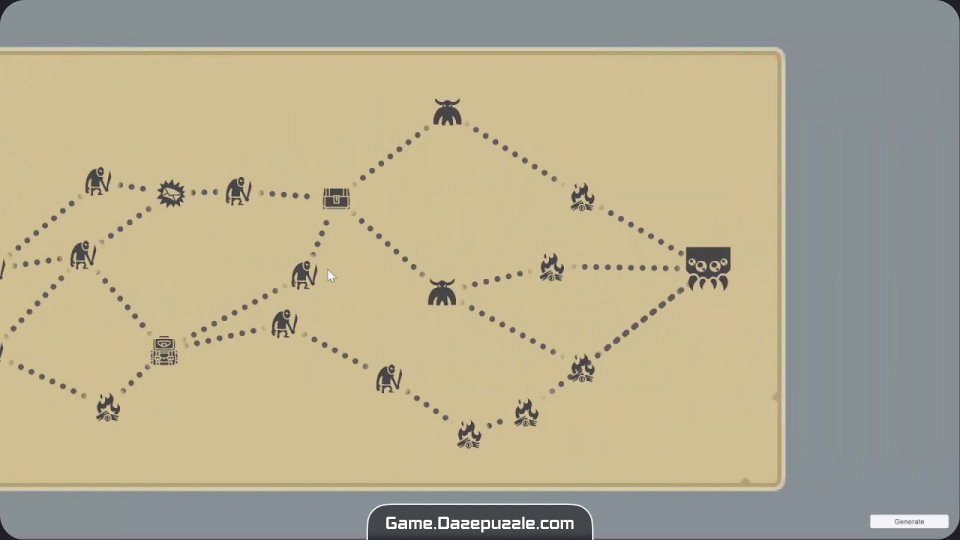
Combat: The Heart of the Game
Combat in Slay the Spire is where the magic happens. It’s turn-based, card-driven, and all about strategy. Here’s how it works:
The Deck-Building Core
Your deck is your lifeline. At the start of each combat, you draw five cards (seven for the Silent) from your deck. You have three energy to spend playing cards, which are either attacks (deal damage), skills (block or apply effects), or powers (permanent effects for the fight). After your turn, your hand is discarded, and you draw five more cards. If your draw pile runs out, your discard pile shuffles back into it.
Your starting deck is simple: five Strikes (6 damage), four Defends (5 block), and a unique card like Bash or Neutralize. After each fight, you can add a card from three options, letting you shape your deck over time.
Energy and Card Costs
Energy management is key. Most cards cost 1 energy, but some cost 0, 2, or more. You can play any combination of cards as long as you have enough energy. For example, you could play three 1-cost cards or one 2-cost card and one 1-cost card. Relics or cards can increase your energy, giving you more flexibility.
Enemy Intentions
Enemies telegraph their moves. A sword icon means they’ll attack, with the number showing damage. A shield means they’ll block or buff. Status effects like Vulnerable or Weak show up above their heads. Use this info to decide whether to attack, block, or apply effects. For example, if an enemy is attacking for 10 damage, playing a Defend (5 block) reduces the damage to 5.
Card Effects and Strategy
Cards do more than just attack or block. Here are some common effects:
- Vulnerable: Enemies take 50% more damage from attacks (e.g., a 6-damage Strike deals 9).
- Weak: Enemies deal 25% less damage.
- Poison: Deals damage each turn until the enemy dies.
- Exhaust: The card is removed from your deck for the rest of the combat (or run, if specified).
- Retain: The card stays in your hand instead of being discarded.
As a beginner, focus on balancing offense and defense. Don’t just spam attacks—block when enemies hit hard. Cards like Bash (Ironclad) or Neutralize (Silent) are great for setting up big turns by applying Vulnerable or Weak.
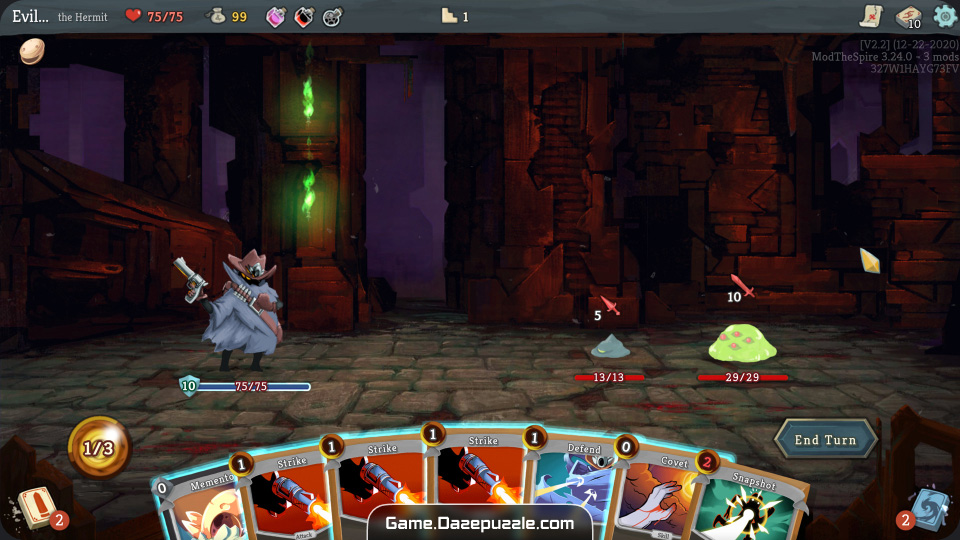
Building a Strong Deck
Deck-building is the soul of Slay the Spire. A good deck is focused, efficient, and adaptable. Here are some tips to get you started:
Start Simple
Early in Act 1, add cards that improve your starting deck. For the Ironclad, cards like Pommel Strike (deals damage and draws cards) or Shrug It Off (grants block and draws) are great. For the Silent, look for poison cards like Deadly Poison. Don’t overcomplicate your deck early—stick to cards that synergize with your character’s strengths.
Thin Your Deck
Your starting Strikes and Defends are weak compared to cards you’ll find later. Removing cards (at shops or events) makes your deck leaner, so you draw your best cards more often. Prioritize removing Strikes over Defends, as block is always useful.
Synergy Is Key
Look for cards that work together. For example, the Ironclad’s Whirlwind (deals damage for each energy spent) pairs well with strength-boosting cards like Flex. The Silent’s poison cards shine with Catalyst (doubles poison stacks). Relics can also enhance synergies—Molten Egg upgrades all attack cards you add, making your Ironclad deck hit harder.
Don’t Bloat Your Deck
Adding every card you see makes your deck inconsistent. A deck with 20-25 cards is often stronger than one with 40. Skip cards that don’t fit your strategy, like a power card with no exhaust synergy. Quality over quantity!
Upgrade Wisely
At rest sites, you can upgrade a card instead of healing. Upgrades make cards stronger—Strikes deal 9 damage instead of 6, Defends grant 8 block instead of 5. Prioritize upgrading key cards like Bash (more Vulnerable) or Neutralize (more damage). If you’re low on HP, heal instead—surviving comes first.
Relics: Your Passive Power
Relics are passive items that give you an edge. You start with one (like Burning Blood) and gain more from elites, chests, and events. Some relics are game-changers:
- Kunai: Gain 1 Dexterity (boosts block) after playing three attacks in a turn.
- Orichalcum: Gain 6 block if you end your turn with 0 block.
- Molten Egg: Upgrades all attack cards you add to your deck.
Relics can define your run, so experiment with them. Rarely, you might skip a relic if it has a downside (like losing max HP), but as a beginner, take them all to learn their effects.

Potions: One-Time Boosts
Potions are single-use items stored in your potion belt (two slots to start). You can get them from fights, shops, or events. Common potions include:
- Block Potion: Gain 12 block.
- Strength Potion: Gain 2 Strength (boosts all attacks).
- Fire Potion: Deal 20 damage to an enemy.
Use potions strategically—save them for tough fights like elites or bosses. You can discard potions to make room for better ones, so don’t hoard useless ones.
Ascension Mode: The Ultimate Challenge
Once you beat a run, you unlock Ascension mode, which adds difficulty modifiers (like stronger enemies or less healing). There are 20 Ascension levels, each tougher than the last. Don’t worry about Ascension as a beginner—focus on winning a standard run first. It’s a great way to test your skills later.
Tips for Your First Run
Ready to dive in? Here are some beginner-friendly tips to help you survive your first run:
Experiment and Learn
Your first few runs will probably end in defeat, and that’s okay! Each run teaches you something new—enemy patterns, card synergies, or relic effects. Don’t be afraid to try weird cards or relics to see what works.
Balance Your Deck
A good deck has offense, defense, and utility. If you only take attack cards, you’ll die to big hits. If you only take block cards, fights will drag on. Aim for a mix of damage, block, and effects like Vulnerable or Weak.
Prioritize Card Removal
If you hit a shop or event that lets you remove a card, do it. Removing a Strike makes your deck more consistent, letting you draw your shiny new cards more often.
Watch Enemy Patterns
Enemies follow predictable patterns. If an enemy is buffing this turn, attack instead of blocking. If they’re hitting for 20 damage next turn, stack block now. Learning these patterns is half the battle.
Save Potions for Bosses
Bosses are tough, so hold onto potions for them. A well-timed Strength Potion or Fire Potion can turn a losing fight into a win.
Rest vs. Upgrade
At rest sites, choose based on your needs. Low on HP? Rest. Got a key card like Bash or Catalyst? Upgrade it. Early in a run, upgrading is often better to make your deck stronger.
Common Mistakes to Avoid
Even seasoned players make mistakes, but here are some pitfalls to watch out for as a beginner:
Taking Every Card
Bloating your deck with mediocre cards dilutes your strategy. Skip cards that don’t fit your plan, even if they seem cool.
Ignoring Defense
It’s tempting to go all-in on damage, but block is crucial. A few Defends or block-granting relics can save your run.
Fighting Elites Too Early
Elites are tempting for relics, but they’re deadly if your deck is weak. Build up your deck with basic enemies before tackling them.
Hoarding Gold
Gold is useless if you die. Spend it at shops on cards or relics that improve your deck. Removing a card is often worth more than buying a shiny relic.
Forgetting to Check the Map
Always plan your path. Missing a rest site before a boss or skipping a shop when you’re flush with gold can cost you.
Why Slay the Spire Is Awesome
Slay the Spire is a game that keeps you coming back. Its mix of strategy, randomness, and replayability makes every run feel fresh. Whether you’re perfecting an Ironclad strength build, stacking poison with the Silent, or juggling orbs with the Defect, there’s always a new way to play. The game’s depth means you’ll discover new synergies and strategies even after dozens of runs.
Start Slaying!
You’re now armed with the basics to tackle Slay the Spire. Pick the Ironclad, jump into a Standard run, and start experimenting. Don’t stress about losing—every death is a lesson, and every win feels epic. As you climb the Spire, you’ll unlock new characters, cards, and relics, making each run more exciting. So grab your deck, face the Spire’s challenges, and have a blast becoming a master slayer. Got questions or want to share your first win? Let’s hear it! Happy slaying!
Thank you for keeping up with Game.Dazepuzzle.com




